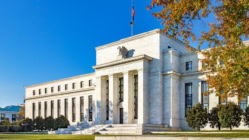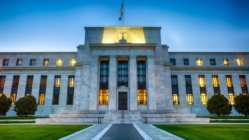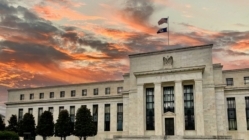
HORRIFIC SPACE SHUTTLE CRASH
On January 28th, 1986, the entire world watched the Space Shuttle Challenger explode and crash to the earth – on live TV.
Seven people lost their lives, including school teacher Christa McAuliffe, right in front of our eyes and – everyone wondered what the hell happened?
The talking heads in the press speculated that it would take months to find out, but the stock market gave us the answer almost immediately.
This is because Morton Thiokol’s stock price tanked within minutes after the crash, as explained in this paper.
Morton Thiokol was the firm that made the faulty “O-rings” that were the cause of the crash, and you can read all about that here.
So, even though it took government investigators five months to figure out the cause of the crash, the “market” knew almost immediately.
I read about this in the famous book “The Wisdom of Crowds.”
In that book, the author points out how large groups of individuals, all acting independently, often come up with far more accurate answers than even the most brilliant of experts.
Crowds can also guess the weight of cows and the number of jellybeans in a large jar – with amazing accuracy too (if all the guesses are averaged).
BOND MARKET IS “A CROWD” TOO
I tell the above story because the bond market is very similar to the stock market that quickly assessed the cause of the Challenger explosion.
The bond market is also made up of thousands of investors acting independently – and maybe in the aggregate they know something that all the “experts” predicting higher rates don’t?
I say that because – even though rates shot up today in response to inflation concerns, they have still generally fallen by about 1/8% to 1/4% since their recent “peak” in October 2021.
I found that surprising in light of all the inflation reports popping up everywhere (why would bond investors accept a 1.5% yield when inflation reports are running at 6%?).
So – what might the bond market know that everyone else is missing?
Here are a few thoughts:
- Major Inflation Not Imminent/Deflationary Signals: This is a point Jeff Snider makes time and again in his excellent Making Sense Podcast. Mr. Snider points out there is actually a “dollar shortage” (when we need “too many dollars” to create inflation) for reasons I won’t go into here. He also points out that bank lending is the single biggest source of new money creation, and currently banks are not lending at anywhere near the pace they do in inflationary times. Mr. Snider reminds us that “the Fed does not print money,” but the banks create money by lending it.
- Current Inflation May Be Transitory After All: The most recent Odd Lots Podcast explains how and why lumber prices have crashed recently – when everyone thought they’d climb forever only a few months ago. In addition, many of our shortages are caused by “container” bottlenecks at our major ports that are probably solvable. The market may solve many other supply problems as well – including labor shortages if/when government subsidies abate.
- Economy Is Very Weak: The economy may be much weaker than anyone fully understands (a point Mr. Snider makes frequently), making it likely that rates will fall.
- The Fed Has Lost Its Power: Mr. Snider also makes the point that the Fed has much less power than most people realize and is thus unable to push up long-term rates in ways that most people think. They can move short-term rates and they can temporarily influence long-term rates with its statements, but the bond market is gonna bond market – no matter what the Fed does, according to Mr. Snider.
- China: The Chinese economy is experiencing major problems too, as it has far too much debt. Major defaults and/or currency crises could very well spark a “flight to safety” – where investors move en mass to U.S. Bonds – and thus drive rates much lower. We saw this happen numerous times after 2008, when problems in Greece, Iceland, Spain, Ireland and Cyprus drove rates much lower.
- The Government & Economy Can’t Afford Higher Rates: Government, consumers and many businesses have far too much debt and cannot begin to afford higher rates. If rates climb even 1%, the extra payments would bankrupt tens of thousands of people and entities of all sorts – and potentially send the economy into a tailspin. Most bond investors know this and may be counting on the Fed to somehow suppress rates – despite the fact that the Fed seems more and more powerless, as per my comment above.
WHY I THINK INFLATION REMAINS A CERTAINTY
Again – I am sharing my above narrative to make the point that the bond market could very well know things we (especially me) don’t, and that rates could very well come down again for reasons unbeknownst to anyone.
But, despite all that – I still firmly believe we will see significant inflation for a few reasons:
- It’s Baked In: With so many “input” costs (labor, energy, steel, and many other commodities) already so much higher, producers will be forced to charge higher prices to continue to make profits.
- WWII; Government Must Have Inflation: After WWII, America’s national debt was as high as it is today, and the monetary authorities at the time intentionally let inflation run hot after WWII – because that was the only way to pay down the debt. The government knowingly let the dollar become worth much less – so they could easily pay down the national debt with much less valuable dollars. And – given that this is probably the only option left for our government to pay down its current massive debt load, inflation seems all but inevitable.
It is just a matter of when.
But, once again, the bond market might know something I don’t. 😊
Jay Voorhees
Founder/Broker | JVM Lending
(855) 855-4491 | DRE# 1197176, NMLS# 310167
























